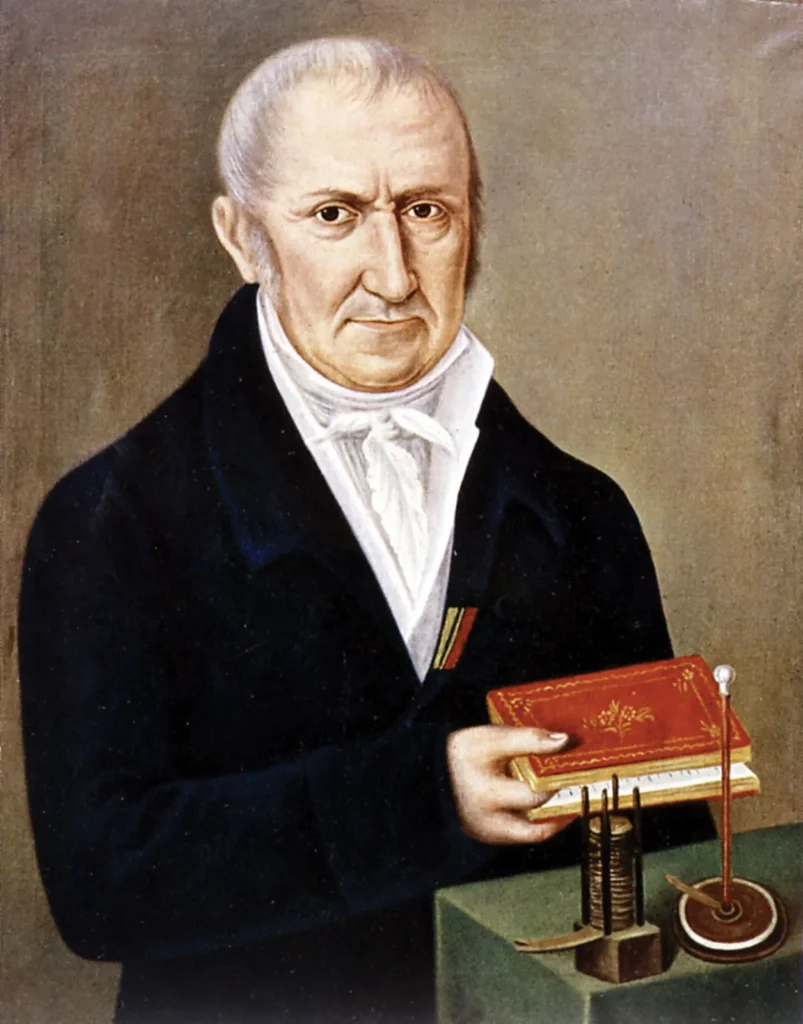Have you ever wondered where we get the standard unit of electrical potential the volt from? The answer is an eighteenth century Italian chemist and physicist named Alessandro Giuseppe Antonio Anastasio Volta.
Volta was born on 18 February 1745 to Filippo Volta, and Donna Maddalena in the Italian town of Como, which lies on the edge of the lake of the same name.
It had been expected that he would enter the church but in 1774, he became a professor of physics at the Royal School in Como. During his time there before leaving in 1779, he not only taught but studied the chemistry of gasses. In particular, having read a scientific paper entitled “Flammable Air” by Benjamin Franklin he managed to identify and isolate the gas Methane. This is also the time he began to put his energies into the study of electrical capacitance. That is objects potential to store electricity.
In 1779, aged 34, he became a professor of experimental physics at the University of Pavia, a chair that he occupied for almost 40 years until his retirement. Like many driven people he found little time for much else away from his work and experiments. However, in 1794, he married an aristocratic lady also from Como called Teresa Peregrini.
In 1800, Volta invented what became known as the voltaic pile. This was the first true electric battery to produce a steady electric current. Volta had discovered that the most effective pair of metals to produce electricity were zinc and copper. Initially he had experimented with wine cups cups filled with brine into which he placed one copper and one zinc electrode. Each one of these was a cell. These could then be connected in series to produce a greater strength charge. The voltaic pile was an extension of this idea replacing the wine cups with cardboard soaked in brine allowing for individual cells to be piled one on top the other.
Over the next few years Alessandro Volta and his work became widely known and admired. Indeed Napoleon Bonaparte, the Emperor of France, so admired Volta’s discoveries that in 1810 he made him a count in honour of his work.
In 1819 Volta retired to his estate in Camnago near Como in Italy. Just after his 82nd birthday on 5th March 1827 he died there and was buried there.
That’s not the end of the story for Alessandro however. He is honoured and his memory is preserved in a number of ways.
Camnago is now named “Camnago Volta” in his honour.
The Civic Museum in Como located in public gardens by the lake is named the Tempio Voltiano or Volta’s Temple in English.
At the University of Pavia in the Old Campus there is a classroom known as the Aula Volta which was created in 1787 specifically at the request of Emperor Joseph II who very much admired Volta’s work. The University Museum also houses his chair, blackboard and many of his scientific instruments.
The Italian government honoured him in 1990 by incorporating images of Volta, his Voltaic Pile Battery and the Tempio Voltiano on the 10,000 Lira note.
There is even a species of electric eel named after him!
However his greatest legacy is the SI unit of electrical potential being named the Volt.


Leave a Reply